Frances Howard Carr, Countess and Killer
The popular history of Tudor England is all about the royal family – the dour tight-fisted Henry VII, the laughing murderous Henry VIII, the boy-king Edward, the bloody-handed Mary, the glorious asexual Elizabeth. Of course, that’s barely scratching the surface of affairs. The real power struggles in the court were the families struggling for a place in the new nobility. The Wars of the Roses had wiped out most of a generation of the British upper class, and there were a lot of prizes up for grabs. The most famous of these was the Boleyn family of Norfolk, whose ascent up the ranks was bloodily cut short with the execution of Anne and George Boleyn. Less prominent but equally unfortunate were the Dudleys, who very nearly took over the throne of England via the ascension of Lady Jane Grey. The eventual end of the House of Tudor didn’t put an end to these dynastic struggles, and under James Stuart the families continued unabated. One such family were the Howards.
The Howards had been related to and allied with the Boleyns a generation earlier, and had even put their own Queen on the throne next to Henry VIII. Unfortunately for them Catherine Howard’s previous indiscretions turned out to be a lethal liability and she met the same fate as her cousin Anne. [1] Her immediate relatives fell from favour, though they managed to avoid the block. Her cousin Thomas was later a victim of Henry’s paranoia during his final days, and was executed for having a treasonous coat of arms. His son Thomas was equally unfortunate, as he became involved in a plot to put Mary Queen of Scots on the throne and lost his head for it. The next Howard heir was also named Thomas, and he was only 11 years old when his father died. He managed to redeem the family name through his naval service, being knighted for his efforts against the Spanish Armada. He also increased the family fortune by marrying Katherine Knyvet, a young heiress who was already a widow at the age of 16. The couple had fourteen children, including a girl named Frances who was born on the 31st of May 1590.
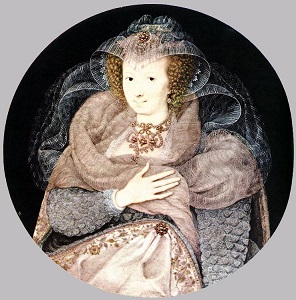
As a daughter of the Howard family, Frances Howard’s role early in her life was to be married off to the family’s advantage. She was raised to suit this aim, and at the age of 14 she was married to the 13-year old Robert Devereaux, Earl of Essex. His father had been executed in 1601 for treason and the title had been stripped from the family, but the newly crowned King James had restored it. While it was not unknown at the time for such marriages to be consummated (Henry VII’s mother was only 13 when he was conceived) it was generally considered a bad idea as people were well aware of the health risks of pregnancy at that young age. So the pair were kept separate. Robert was sent off on a tour of Europe, while Frances was sent to court. It was there that all the trouble started.
Robert Carr (or Kerr) and Thomas Overbury met in Edinburgh in 1601. At the time Carr was aged 14 and was a page to the Earl of Dunbar, while Overbury was around 20 and was on a holiday from studying law in London. The pair were both of the same class, the landed (but not noble) gentry, and they struck up a friendship. When Carr headed to London four or five years later the friendship was renewed. By this time Overbury had managed to secure a small position at court, but he soon realised that the charismatic (though less intelligent) Carr was likely to prove far more successful. So he positioned himself as the younger man’s mentor, a decision which paid off in 1606 when Carr quite literally had a lucky break. The break in question was of his leg, while competing in a jousting tournament observed by the forty year old King himself. Naturally the King went to visit the recovering sportsman, and when he did he was so infatuated that he immediately took over nursing the young man back to health personally.

The bisexuality of King James I and VI is an interesting study in how history is told. At the time homosexuality was a crime, but not one that anyone would have dared to accuse the king (even indirectly of). As such, his affairs with his “favorites” were an open secret. On the other hand, historians since then have also often wished to avoid speaking of it, leading to an unspoken gap in their accounts. Even to this day, the euphemistic language of the time persists. As such they will baldly state that King James sat by Carr’s bedside and taught him Latin, then knighted him and gifted him with the confiscated estates of the executed Sir Walter Raleigh, but not give any reason for it beyond him being a “favourite”. Of course, with no direct evidence of any physical relationship between the two, that could be all there was to it. Decide for yourself.
While Carr was ascending the ranks (and Overbury was riding his coattails) he soon became acquainted with Lady Frances Howard Devereaux, by now a seventeen year old lady-in-waiting. The two soon began an affair (though once again, quite how physical it was is open for debate). What is certain is that when Robert Devereaux returned from the continent he and Frances did not have a physical relationship. As Robert himself would later admit, though he did have other lovers he was entirely unable to perform with his wife. This may have been down as much to her attitude – she publicly insulted him, barricaded herself in her room and only consented to let him attempt to have sex with her when he made an appeal to her father to reason with him. It wasn’t really a huge surprise to anyone when she began talking about an annulment.

Overbury had been disapproving enough about the pair’s relationship, but he was horrified when Carr began discussing marriage. He saw Frances as a dangerous influence – nowhere near prestigious enough, and far too strong-willed. More to the point, he knew there’d be no place for him if Carr became a tool of the Howard family. In an attempt to reason with his friend he wrote a poem extolling the virtues of an “ideal wife”, clearly implying that Frances had none of them. It failed to convince Carr, but it did earn Overbury the bitter enmity of Frances.
Then may I trust her body with her mind,
And, thereupon secure, need never know
The pangs of jealousie: and love doth find
More paine to doubt her false, then know her so:
For patience is, of evils that are knowne,
The certaine remedie; but doubt hath none.
Unfortunately for Overbury, the death of Robert Cecil (the earl of Salisbury) in 1611 opened up a power vacuum in court that the Howards were determined to exploit. Cecil had been both Lord High Treasurer and Secretary of State, though his influence had waned towards his death. In fact it had been Carr’s influence that had derailed Cecil’s last great project. [2] So when Thomas Howard (by now Earl of Suffolk and one of the King’s principal councilors) wanted to take over Cecil’s position, his daughter’s affair with Carr was a key part of his plans. There was only the small inconvenience of her husband.
On the 17th May 1613 Thomas and his brother Henry filed a suit on Frances’ behalf for the annulment of her marriage. [3] The grounds were the lack of consummation of the marriage, something which neither side disputed. Unusually though it admitted that Devereaux was not totally impotent, and said that he was able to perform with other women – just not with Frances. [4] This led to much chin-wagging and mockery, which Devereaux became infamous for countering by displaying his erection to anyone who would look. As for Frances, she underwent an examination to prove her virginity. (There were strong rumours that she substituted another woman for this, due to her activity with Carr.) Naturally, all of this was food and drink to the poets and scandalmongers of London, who soon decided that Frances had used witchcraft to render Devereaux impotent. This was also considered a possibility by the judges, though they decided there was no evidence for it. Coincidentally around the same time Frances had a folk healer named “Cunning Mary” arrested on the grounds that Mary had stolen one of her rings. Mary claimed that the ring had been a payment for using witchcraft to kill Essex and that she had then refused to do so, however the judge sided with Frances.
Letchery did consult with witcherye
how to procure frygiditye.
Upon this ground a course was found
to frame unto a nullatye.
– an anonymous poem of the time
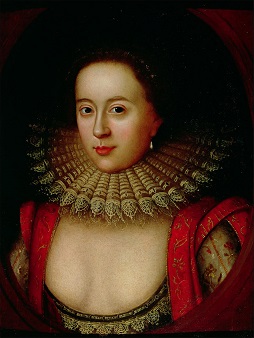
Despite the grounds, the King was reluctant to destabilise the court by granting the annulment. This was largely due to Overbury calling in every favour and marker at his disposal to try to prevent his friend making what he thought was a terrible mistake. Unfortunately for him Carr was less than grateful for the interference, and he helped the Howards outmanoeuvre Overbury. They arranged for the King to offer him a post as Ambassador to Russia – a notable honour, but one which would take him well out of the court. Overbury decided to decline the post, but unfortunately for him the King (primed by the Howards) took extreme offence at this and had Overbury imprisoned in the Tower of London. Five months later he fell ill and died. Less than two weeks afte rthat the King approved the annulment, and Carr married Frances Howard.
Two years later, the fickle King’s affections had moved on. Carr had received an Earldom, but now he had been replaced by George Villiers. Around this time (perhaps in order to make sure Carr was taken out of the picture) rumours about Overbury’s death, which had been circulating for quite a while, became a lot more prominent in the court. The King was forced to order an investigation. At the time the Attorney General was Francis Bacon, and he and Edward Coke (one of the judges on the King’s Bench [5]) headed the inquiry. Based on a letter sent by Gervaise Elwes, the governor of the prison, they concluded there had been attempts made to poison Overbury through his food, and when that had failed then the actual cause of death had been a enema laced with sulfuric acid.
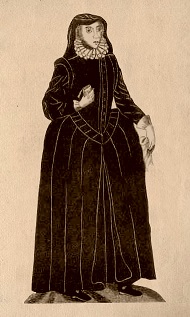
The initial person implicated in the murder was Robert (or Richard) Weston. Elwes had said that he had caught Weston trying to poison the prisoner and had prevented it, but had then later discovered that Weston had arranged the fatal enema. On that evidence Weston was convicted and executed, though he did not implicate anyone else. The next thread was the source of the poison, which turned out to be a woman named Anne Turner. Anne was the widow of a physician and the madame of two brothels known to be frequented by many at court. She was a wealthy and well-connected woman, who had once been a servant of Frances Carr, another thread in the connections to the two. Unfortunately for her a search of her premises turned up a stash that contained both pornography and heretical materials, which was enough evidence for a court at the time to convict anyone of anything. Rather than face the excruciating death of a heretic she confessed to her part in the murder and gave up her source for the poison. As a result she was “only” hanged.
Anne had got the poison from an apothecary named James Franklin, and he gave the prosecutors what they had been looking for – a way to tie the poisoning to the Carrs. He gave evidence that Elwes had been involved in organising the poisoning, and that Frances Carr had paid him to do it. Despite this being contradicted by the letters Elwes had sent, the prosecutors decided not to enter the letters into evidence and so the jailer was executed alongside the apothecary. This level of legal malpractice was pretty normal for the justice of the day, where trials like this were generally decided where the King wished rather than on the basis of the evidence.
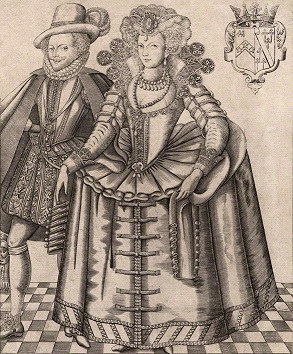
Frances and Carr were arrested and imprisoned in the Tower of London. Frances confessed almost immediately, but her husband was more stubborn. Whether she was actually guilty or not is hard to tell, with the waters so muddied by the biased prosecution, but most historians agree that she was involved in the plot at least. Her husband is more controversial. Regardless of his guilt, he was allegedly urged to plead guilty in return for a guarantee of clemency by the King. It’s speculated that this was because the King himself had also been involved in killing Overbury (or possibly that the Queen, who hated him for an insult he had been overheard making, had actually arranged the crime). Carr refused to give in, but the result was the same. He and Frances were both found guilty.
Frances is often described as seeming “faint” during the trial, but one often omitted detail is that she was heavily pregnant at the time. She gave birth to a daughter, Anne, in December 1615 while she was in the Tower of London under sentence of death. It wasn’t until April that the sentence was officially commuted to imprisonment. The King’s decision provoked outrage among both the enemies of Carr and the Howards, and among the general public. The previous witchcraft allegations against Frances had been resurrected and she had become a figure of hatred – the archetypal “evil woman”. Her father Thomas’ position was similarly weakened, and in 1618 he was suspended from his post as Lord High Treasurer over allegations that his wife Katherine (Frances’ mother) had been taking bribes. [6] As if to add insult to injury, Katherine contracted smallpox while they were awaiting trial and her face was badly scarred. The pair were found guilty. Thomas was forced to appeal to the enemies who had outmanouevred him for clemency, and by granting it they broke the political power of the Howards.
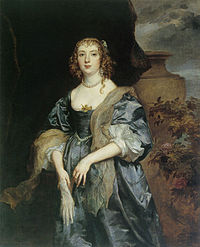
Frances was released from the Tower in 1622, and her husband was released in 1624. The pair lived in relative obscurity for the rest of their lives, as did Frances’ father. They had retained their titles, though as they had no other children the Earldom of Somerset died with Robert Carr. Frances passed on in 1632, at the young age of 42. She didn’t live to see her daughter Anne get married in 1637 to the heir of the Earl of Bedford. Her reputation did haunt the couple, however, as the young man’s father ferociously opposed the match because of both Frances and because Anne had been born in the Tower. It took the intervention of the King (by that time Charles I) to persuade him to relent. Anne went on to have several children, and through her many of Frances’ descendants are still part of the British aristocracy today. Despite this, Frances remains an infamous figure in English history. She was simply too good a villain for the Victorian historians, who found great glee in painting a strong-minded woman as a dastardly villain. Did she arrange for Overbury to be killed? Perhaps she did. But whether she did or not, history had already passed judgment.
Images via wikimedia.
[1] As a result of this in 1541 it became officially treason for a queen consort not to disclose her entire previous sexual history to the king within twenty days of the wedding.
[2] This was to get rid of all the complicated feudal incomes and fees by which the King was supported, and instead have the supported by a direct payment from the treasury (thus consolidating all taxation under Parliament). If this had passed it might have defused some of the tension that led to the Civil War, as it was the change formed part of the restoration of Charles II.
[3] As a woman, she couldn’t legally file the suit herself.
[4] Against that, he did only have one child (by a later marriage) and that may have been conceived by his wife’s lover.
[5] The King’s Bench was one of the three courts that would eventually be combined into the Supreme Court. It was originally the court that followed the King as he traveled around the country, but at this point it was firmly based in London. Defining the difference in jurisdiction between it, the Court of Common Pleas and the Exchequer of Pleas is well beyond the scope of this article – suffice to say it was often a disputed matter even by those courts themselves.
[6] Which she almost certainly had, but this would have been pretty normal for the time.
